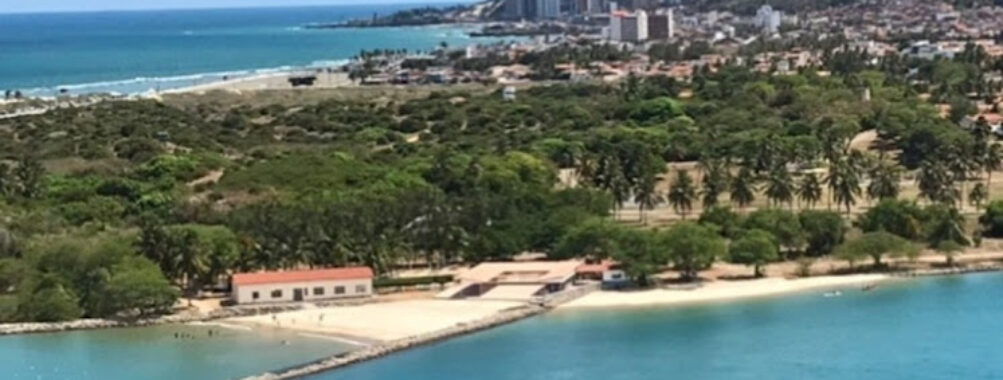
Natal
Table of Contents
Description
Natal, the capital of Rio Grande do Norte in Brazil’s northeast, is one of those places that sneaks up on you. At first glance, it’s the endless coastline that grabs your attention—the kind of beaches that seem to stretch forever, framed by golden dunes and turquoise waters. But spend a little time here and you realize it’s more than just a postcard-perfect destination. It’s a city where history, culture, and nature all collide in ways that feel both laid-back and unforgettable. The Forte dos Reis Magos, a 16th-century fortress shaped like a star, still stands guard at the mouth of the Potengi River, a reminder of when Portuguese navigators first made landfall here. And just across the river, Genipabu’s towering dunes and freshwater lagoons create a surreal desert-meets-ocean landscape that’s unlike anywhere else in Brazil.
What makes Natal special is how it balances the bustle of a capital city with the tranquility of its natural surroundings. It’s not overly polished, and honestly, that’s part of its charm. You’ll find stretches of quiet sand where you can walk for hours, but also lively beachside kiosks serving fresh seafood and chilled caipirinhas. The Via Costeira highway, running along 15 kilometers of pristine beaches, ties it all together—making it easy to hop from one stunning spot to the next. And while tourism has grown, the atmosphere still feels authentic, with locals welcoming visitors in that warm, easygoing Brazilian way. It’s a place where you can slow down, breathe in the salty air, and just let the rhythm of the ocean guide your days.
Key Features
- Forte dos Reis Magos – a star-shaped fortress from the 1500s with sweeping ocean views
- Genipabu dunes – massive sand hills perfect for buggy rides and sandboarding
- Freshwater lagoon at Genipabu – a surprising oasis tucked behind the dunes
- Via Costeira – a scenic 15 km coastal highway connecting some of the city’s best beaches
- Extensive coastline – soft sands, warm waters, and plenty of spots for swimming or relaxing
- Local cuisine – seafood-heavy dishes, tropical fruits, and regional specialties
- Easy access to day trips – including nearby fishing villages and ecological reserves
Best Time to Visit
Natal is blessed with sunshine for most of the year, so honestly, there’s rarely a bad time to go. That said, the sweet spot tends to be between September and March, when the skies are clearer, the ocean is calm, and the evenings are comfortably warm. If you’re someone who isn’t a fan of heavy rain, it’s best to avoid April through July, when showers are more frequent. The upside of traveling in the wetter months, though, is fewer crowds and lower prices. Personally, I think December is magical here—the city is alive with festivals, the beaches are buzzing, and the energy feels contagious. Just be prepared for it to be busier, since it’s peak holiday season in Brazil.
How to Get There
Reaching Natal is pretty straightforward. The city is served by the São Gonçalo do Amarante International Airport, which connects to major Brazilian cities like São Paulo, Rio de Janeiro, and Brasília, as well as some international routes. From the airport, it’s about a 40-minute drive to the city center or the main beach areas. Taxis and ride-hailing apps are easy to use, but if you want more freedom to explore the coastline, renting a car is a smart move. The roads are generally good, and you’ll appreciate the flexibility when heading to dunes, lagoons, or smaller coastal towns nearby. Buses exist, but they can be slow and a bit confusing if you’re not familiar with the routes. For most travelers, private transfers or car rentals make the trip much smoother.
Tips for Visiting
First and foremost, pack light clothing and plenty of sunscreen. The sun here is no joke, and you’ll thank yourself later for being prepared. If you’re planning to hit the dunes at Genipabu, try booking a buggy ride with a licensed driver—these guys know the terrain like the back of their hand, and it’s both safer and way more fun than attempting it solo. Also, don’t rush. Natal isn’t the kind of place you “do” in two days. Give yourself at least four or five to soak in the beaches, try the food, and maybe even take a day trip to nearby Pipa or Maracajaú for snorkeling.
One thing I learned the hard way: bring cash. While cards are widely accepted in the city, some of the smaller beach stalls and kiosks still prefer cash, especially outside the central areas. And if you’re a foodie, don’t skip the local dishes—shrimp stews, tapioca pancakes, and fresh tropical juices are worth every bite. Finally, be open to slowing down. Life in Natal moves at its own pace, and that’s part of the magic. So let go of rigid schedules, watch a sunset or two, and just enjoy being in one of Brazil’s most underrated coastal gems.
Location
Places to Stay Near Natal
Find and Book a Tour
Explore More Travel Guides
No reviews found! Be the first to review!